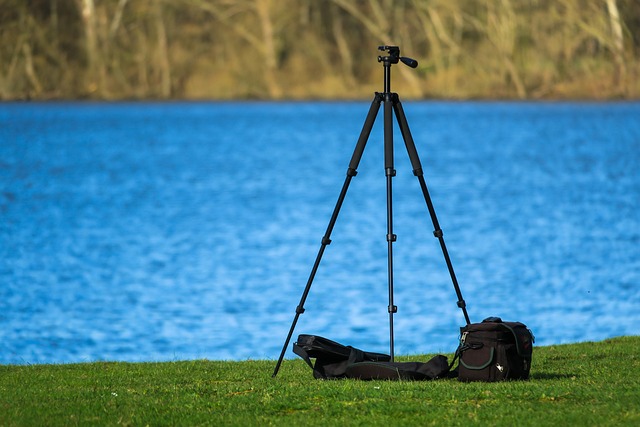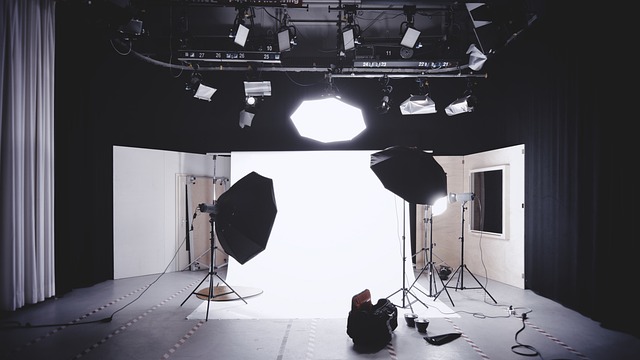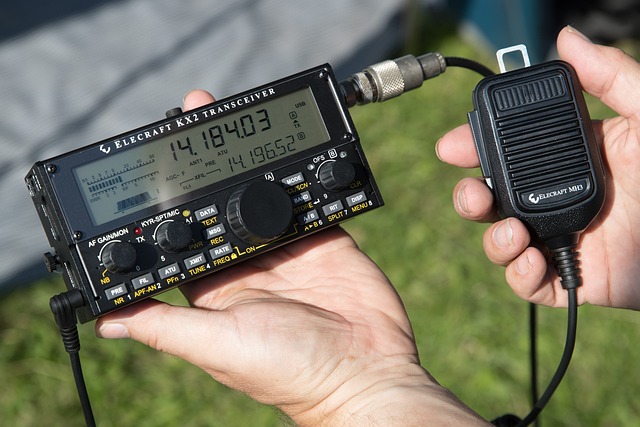In today’s real estate, high-quality photos and videos are no longer a luxury in listings—they’re an absolute necessity. However, you cannot achieve high-quality photography with just any gadget. Instead, there are must-have gadgets for real estate agents that ensure you capture high-quality visuals.
Studies show that listings with high-quality visuals receive more inquiries and sell 32% faster than those without. This shows you should invest in high-quality gadgets and editing software to get the best return on investment for your listings.
So, you have the passion to capture excellent visuals of properties, but what equipment do you need to take your real estate visuals to the next level?
Well, in this guide, I will unveil the must-have gadgets that will transform your listings from good to great. I have used some of these tools and they have helped me elevate my real estate ROI, just because of high-quality equipment.
Subscribe to our newsletter to receive more informative guides on real estate photography and videography. We also offer drone covering services at an affordable cost.
The Must-Have Gadgets for Real Estate Visuals
1. High-Quality Camera

A Digital single-lens reflex camera (DSLR) or mirrorless camera is the backbone of your real estate media arsenal. While smartphones have come a long way, a good camera offers superior image quality, interchangeable lenses for versatility, and manual controls for creative freedom.
You can look for options with large advanced photo system type C (APS-C) or full-frame sensors for excellent low-light performance, crucial for capturing well-lit interiors.
Additionally, you should also choose a camera with wide-angle lenses for showcasing spacious interiors. They allow you to capture entire rooms without distortion, making properties appear more expansive and inviting.
Adobe suggests that a focal length between 12mm and 35mm is ideal for real estate photography.
Alternatively, you can choose prime lenses that offer a fixed focal length (e.g., 35mm, 50mm), resulting in sharper images and faster apertures for superior low-light performance. Prime lenses are perfect for highlighting architectural details and creating a sense of depth in your photos.
You can opt for 360° cameras that will allow you to capture a 360° angle of a property interior. This aspect helps potential buyers to virtually explore a property from any device.
As a result, 360° videos or photos can significantly increase engagement and generate excitement about the listing.
2. A Tripod

A tripod is another must-have gadget for real estate agents marketing with visuals. A camera tripod is a three-legged stand that provides stability for your camera. As a result, you to take sharp photos at slow shutter speeds, which are ideal for low-light situations or capturing motion blur creatively.
Tripods also come in handy for precise framing and keeping the camera perfectly still for long exposures, like capturing property exterior.
However, you should opt for lightweight and portable for travel, or tall and sturdy for professional use. Most tripods have a detachable mounting plate that clicks onto your camera’s tripod socket, and a head that allows you to tilt and swivel the camera for precise positioning.
3. Lighting Gear

While natural light is preferred in shooting real estate visuals, situations arise where additional lighting is necessary. For instance, speed lights or strobes offer portable and powerful lighting solutions to brighten up shadows and illuminate specific areas. Furthermore, you can use a diffuser attachment to soften the light for a more natural look.
Alternatively, you can use continuous light sources like LED panels to provide consistent, flicker-free illumination, ideal for video shooting. They’re also great for illuminating dark corners or creating a specific mood in your photos.
4. Audio Enhancement

As a real estate visuals enthusiast, you should have an audio enhancement system. For instance, you can have an external microphone, because built-in camera microphones often pick up unwanted background noise.
Therefore, an external microphone will significantly improve the audio quality of your videos, delivering a clear and professional-sounding experience for viewers.
You can opt for a portable audio recorder if you are creating detailed walkthrough videos or interviews with clients. You should consider a dedicated portable audio recorder for capturing high-fidelity sound and sync with your video footage later.
5. Drone

Drones have become a game-changer in real estate visuals. They capture stunning aerial views that traditional photography can’t match. Drones cover a unique perspective of a property. Can you imagine soaring over a property, showcasing the entire backyard, pool, or sprawling acreage? Drone footage offers a sense of scale and layout unmatched by ground-level shots.
Drones can beautifully capture property features, making the property stand out in the real estate market.
Furthermore, you can do virtual tours with drones. The drone footage can be seamlessly integrated into virtual tours, giving potential buyers a realistic, immersive experience of the property and its surroundings.
One good thing why drones are one of the must-have gadgets for real estate visuals is that they can reveal a property’s proximity to amenities. For example, you can show off parks, schools, or shopping centers, giving buyers a better understanding of the neighborhood.
Overall, drone visuals add excitement to real estate listings, grabbing attention and potentially leading to faster sales. Furthermore, statistics show that properties with aerial photos sell 68% faster than those without.
6. Editing Software

Photo and video editing software like Adobe Photoshop and Canva are must-have software for real estate agents. They allow you to enhance your photos further by adjusting lighting, and color balance, and removing unwanted elements.
In my case, I usually use Canva to edit my video clips and sync audio with the visuals for my real estate tours. Furthermore, Canva has built-in templates you can use to edit photos for sharing on social media.
I also have a team that uses Adobe Photoshop to edit videos. The good thing about these software is that they have integrated AI features which I find to be cool and fast.
Budget-Friendly Alternatives
Not everyone has the budget for a full professional setup. That’s why I will also give you budget-friendly alternatives for a starter package for a beginner in real estate photography. Actually, this is how I started as a real estate photographer and it helped me advance to greater heights. I believe that everyone has to start from somewhere.
- A Good smartphone
Many smartphones boast excellent camera capabilities today. Explore apps that offer manual camera controls and RAW capture for greater editing flexibility.
- Utilize natural light
Natural light is the most flattering light source for real estate photography. Learn to schedule your shoots during the day when natural light is most abundant.
- Free editing software
Several free photo editing software options offer essential tools for basic adjustments and enhancements. I started with the free version of Canva and it helped me do great work.
Beyond the Must-Have Gadgets: Essential Skills & Considerations
While gadgets are essential, remember that your skills and brand are equally important. Therefore, you should continuously hone your photography and videography skills through online courses, workshops, or tutorials to stay ahead of the curve.
You should also experiment with different lighting techniques, editing styles, and storytelling approaches to create visuals that stand out from the crowd.
In addition, collaboration with a property stager can significantly enhance the visual appeal of a property. Proper furniture placement, decluttering, and strategic use of décor can make a world of difference
Furthermore, building a strong online presence with a professional portfolio showcasing your best work is crucial. This could be a dedicated website or active social media profiles with high-quality content that showcases your expertise.
The Future of Real Estate Media

The real estate media landscape is constantly evolving. Here are some exciting trends to keep an eye on so as to stay relevant in the market.
- Virtual Reality (VR)
VR technology has the potential to revolutionize the way potential buyers experience properties. Imagine being able to virtually tour a property from anywhere in the world, experiencing the space and layout in a fully immersive way.
- Augmented Reality (AR)
AR can overlay digital information in the real world. Imagine potential buyers being able to virtually “stage” a property with furniture or see renovation possibilities through their smartphones or tablets.
- Artificial Intelligence (AI)
AI can automate some of the post-processing tasks associated with real estate photography and videography, such as image editing and virtual staging. This can save time and resources for busy real estate professionals.
As I said earlier, Canva and Adobe Photoshop have already integrated AI into their software. Therefore, you should learn how you can take advantage of the new features.
- Social Media Integration
Leveraging social media platforms like Instagram and Facebook Reels with high-quality visual content and engaging captions is vital. You can reach a wider audience and generate interest in properties.
Must-Have Gadgets for Real Estate Agents: Conclusion
By equipping yourself with the right tools, mastering essential skills, and staying updated with the latest trends, you can elevate your real estate photography and videography to new heights. Remember, high-quality visuals are an investment that can pay off significantly in a competitive market. So, grab your camera, unleash your creativity, and start capturing stunning visuals that will leave a lasting impression on potential buyers.
Must-Have Gadgets for Real Estate Agents: FAQs
- Do I need a professional camera, or can I use my smartphone for real estate photography?
While smartphone cameras have improved significantly, professional cameras often offer better image quality and more advanced features. In addition, professional cameras allow for greater control over settings like aperture, shutter speed, and ISO, resulting in higher-quality images.
- What are the benefits of using a drone for real estate photography?
A drone provides unique aerial perspectives of properties and surrounding areas, showcasing their features and surroundings. In addition, it allows you to capture expansive views and highlight property amenities like gardens, pools, and landscapes.
- What should I consider when choosing a 360-degree camera for creating virtual tours?
Yes, you should look for cameras with high-resolution sensors to ensure sharp and detailed images. Furthermore, choose a camera with user-friendly software for capturing and editing 360-degree photos and videos.
You should also opt for a camera with a long battery life to avoid interruptions during photo shoots.
- How can photo editing software enhance real estate visuals?
It allows you to adjust exposure, color balance, and contrast to improve the overall appearance of photos. In addition, you can crop and straighten photos and videos to enhance composition and framing.
Editing software can also remove unwanted objects or blemishes from photos to present properties in their best light.



2 Comments